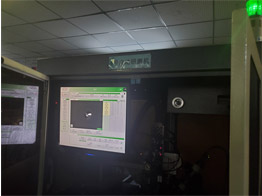
What are the vias in the circuit board, there are several types of PCB vias, and what are the advantages. Here is the PCB Materials Company to talk about it in detail.
Buried, blind, through-hole technology buried, blind, through-hole combination technology is also an important way to increase the density of printed circuits. Generally, the buried and blind holes are tiny holes. In addition to increasing the number of wiring on the board, the buried and blind holes use the "closest" inter-layer interconnection, which greatly reduces the number of through holes formed, and the isolation plate setting will also be greatly Reduction, thereby increasing the number of effective wiring and interlayer interconnections in the board, and increasing the density of interconnections.
Therefore, the multi-layer board combined with buried, blind, and through-holes has a interconnection density of at least 3 times higher than that of the conventional full-through-hole board structure at the same size and number of layers. The size of the printed board combined with through holes will be greatly reduced or the number of layers will be significantly reduced.
Therefore, in high-density surface-mounted printed boards, buried and blind hole technologies are increasingly used, not only in surface-mounted printed boards in large computers and communication equipment, but also in civil and industrial applications. It has also been widely used in the field, even in some thin plates.
These vias are generally divided into three categories, namely blind via, buried via and through via. The blind holes are located on the top and bottom surfaces of the printed circuit board and have a certain depth. They are used for the connection of the surface layer circuit and the inner layer circuit below. The depth of the hole usually does not exceed a certain ratio. Buried hole refers to the connection hole located in the inner layer of the printed circuit board, it will not extend to the surface of the circuit board.
The above two types of holes are located in the inner layer of the circuit board, which is completed by the through-hole molding process before lamination, and several inner layers may be overlapped during the formation of the via hole. The third type is called a through hole. This kind of hole penetrates the entire circuit board and can be used for internal interconnection or as a component positioning hole. Semi-hole multilayer PCB circuit processing
Through hole: Plating Through Hole, this is the most common kind, as long as you hold the PCB to the light, the hole where you can see the bright light is the "through hole." Through hole multilayer PCB circuit processing
Blind via: Blind Via Hole, connects the outermost circuit of the PCB to the adjacent inner layer with a plated hole. Because the opposite side is not visible, it is called "blind pass".
Buried hole: Buried hole, the connection of any circuit layer inside the PCB but not connected to the outer layer. This process can not be achieved by drilling after bonding. Drilling must be performed at the individual circuit layers. After partially bonding the inner layer, it must be plated first before it can be fully bonded, compared to the original through holes and blind holes. It takes more time.
Our company also has Aluminum PCB for sale, please contact us.
Copyright:@2020-2021
Comments Please sign in or sign up to post.
0
0 of 500 characters used